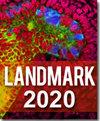Pteropine Orthoreovirus, PRV7S (Sikamat Virus) Demonstrates Oncolysis in Nasopharyngeal Carcinoma Cell Lines.
IF 3.1
4区 生物学
Q2 Immunology and Microbiology
引用次数: 5
Abstract
BACKGROUND Oncolytic properties had been demonstrated in Mammalian Orthoreovirus (MRV) and Avian Orthorevirus (ARV). Besides MRV and ARV, Pteropine Orthoreovirus (PRV) is also categorized under the genus Orthoreovirus. PRV7S (Sikamat virus) is an orthoreovirus isolated in Malaysia. Present study aims to investigate the oncolytic effects of PRV7S on ranges of nasopharyngeal carcinoma (NPC) cells through apoptosis in comparison to MRV3. METHODS Non-cancerous nasopharyngeal (NCNP) and NPC cells were infected by PRV7S and MRV3. The effects of PRV7S on the proliferation inhibition and apoptotic activity of NPC cells was examined using MTT assay and flow cytometry. Additionally, western blot assay was performed to analyze the expression of RAS and apoptotic protein. Lastly, qPCR assay was performed to demonstrate that PRV7S and MRV3 replicated in infected-NPC and infected-NCNP cells. RESULTS The proliferation of NPC cells were significantly inhibited after PRV7S infection in a time dependent manner in comparison to infected-NCPC cells. Flow cytometry analysis showed that PRV7S infection was able to induce apoptosis on NPC cells at 48 hpi. Western blot results showed that upon PRV7S infection, N/H/K RAS protein expression was reduced, whereas caspase-3 protein expression increased in NPC cells. qPCR assay showed higher viral load of PRV7S found in infected-NPC compared to infected-NCNP cells. CONCLUSIONS PRV7S inhibits the proliferation and induces apoptosis of NPC cells similar to MRV3. Therefore, PRV7S is a potential oncolytic virus.翼鸟正呼肠孤病毒,PRV7S (Sikamat病毒)在鼻咽癌细胞系中显示出溶瘤作用。
研究背景:哺乳动物正呼肠孤病毒(MRV)和禽正呼肠孤病毒(ARV)具有溶donlytic特性。除了MRV和ARV,翼鸟正呼肠孤病毒(PRV)也属于正呼肠孤病毒属。PRV7S (Sikamat病毒)是在马来西亚分离的正呼肠孤病毒。本研究旨在探讨PRV7S与MRV3相比通过凋亡对鼻咽癌(NPC)细胞范围的溶瘤作用。方法用PRV7S和MRV3分别感染非癌性鼻咽癌(NCNP)和鼻咽癌细胞。采用MTT法和流式细胞术检测PRV7S对鼻咽癌细胞增殖抑制和凋亡活性的影响。western blot检测RAS和凋亡蛋白的表达。最后,通过qPCR检测证实PRV7S和MRV3在感染的npc和感染的ncnp细胞中复制。结果与ncpc细胞相比,PRV7S感染后鼻咽癌细胞的增殖明显受到抑制,且呈时间依赖性。流式细胞术分析显示,48 hpi时PRV7S感染可诱导鼻咽癌细胞凋亡。Western blot结果显示,PRV7S感染后,鼻咽癌细胞N/H/K RAS蛋白表达降低,caspase-3蛋白表达升高。qPCR检测显示,感染鼻咽癌细胞中PRV7S的病毒载量高于感染ncnp细胞。结论sprv7s抑制鼻咽癌细胞增殖、诱导细胞凋亡的作用与MRV3相似。因此,PRV7S是一种潜在的溶瘤病毒。
本文章由计算机程序翻译,如有差异,请以英文原文为准。
求助全文
约1分钟内获得全文
求助全文
来源期刊

Frontiers in Bioscience-Landmark
生物-生化与分子生物学
CiteScore
3.40
自引率
3.20%
发文量
301
审稿时长
3 months
期刊介绍:
FBL is an international peer-reviewed open access journal of biological and medical science. FBL publishes state of the art advances in any discipline in the area of biology and medicine, including biochemistry and molecular biology, parasitology, virology, immunology, epidemiology, microbiology, entomology, botany, agronomy, as well as basic medicine, preventive medicine, bioinformatics and other related topics.
 求助内容:
求助内容: 应助结果提醒方式:
应助结果提醒方式:


